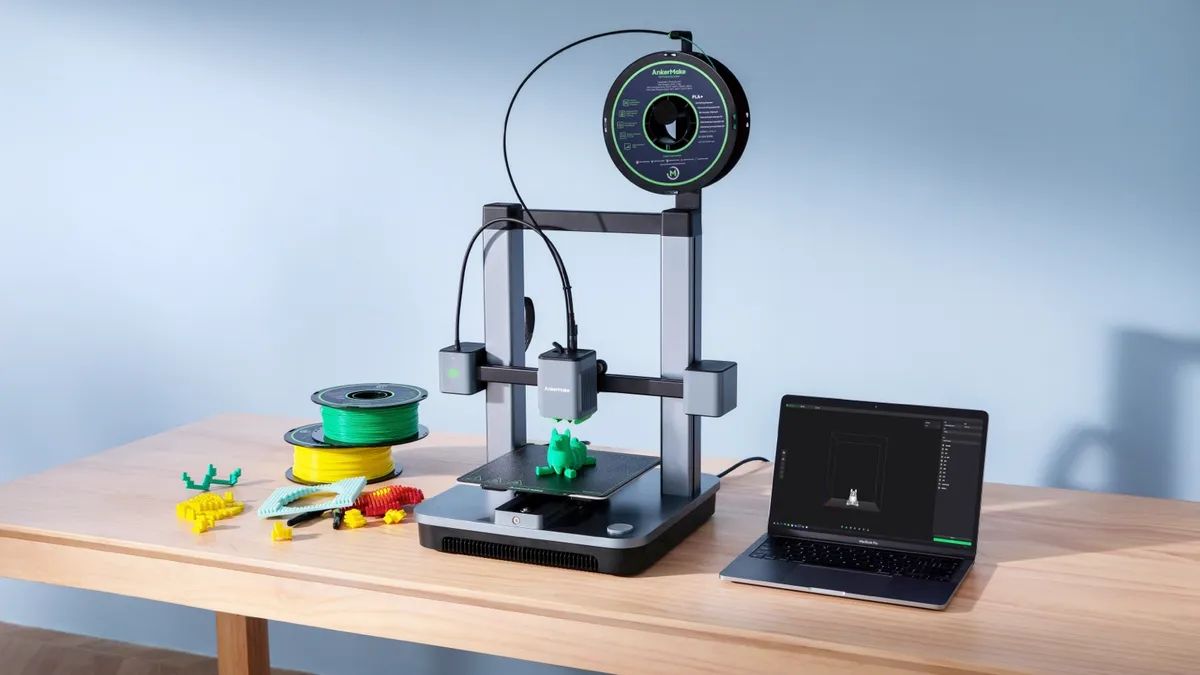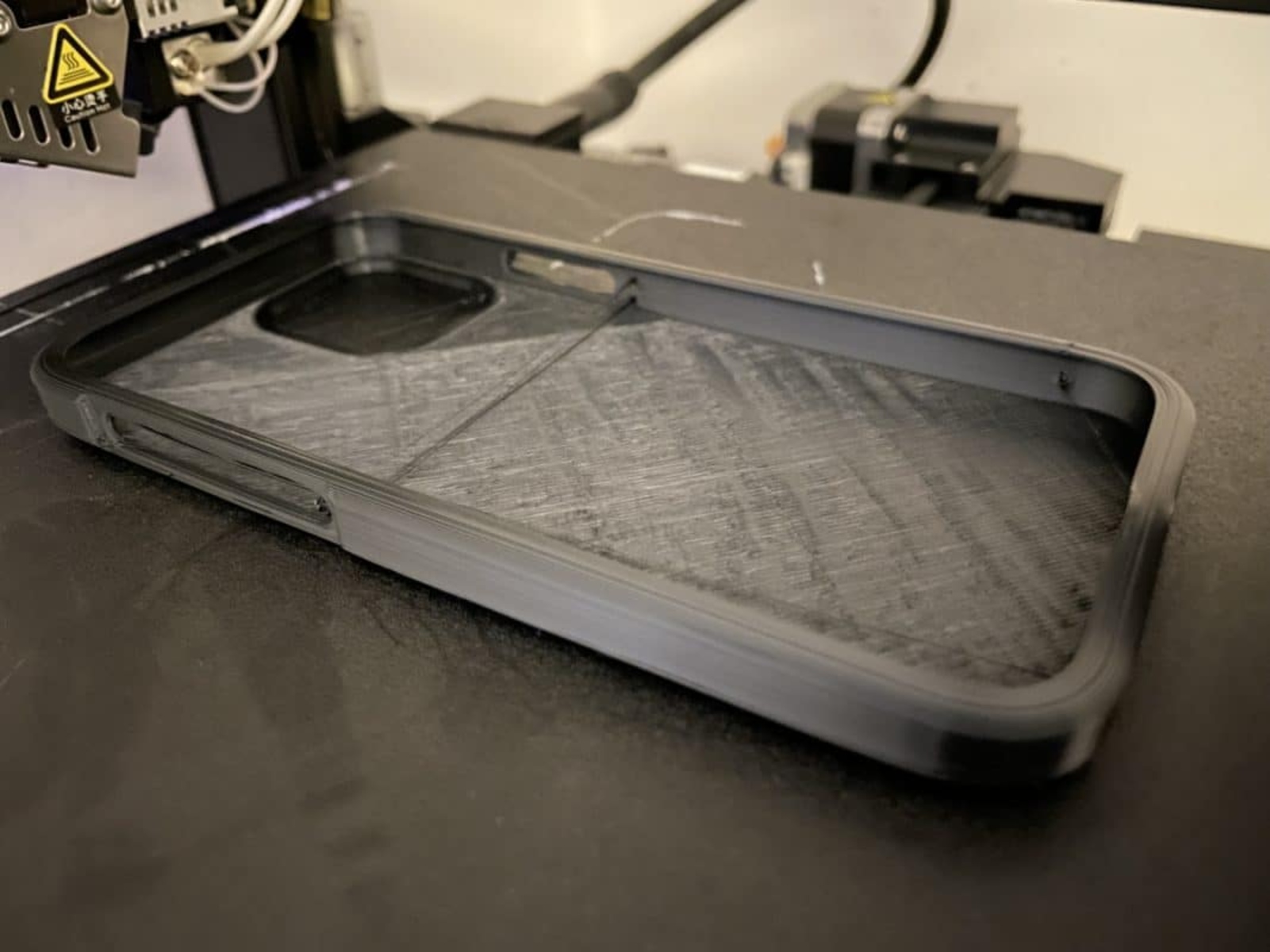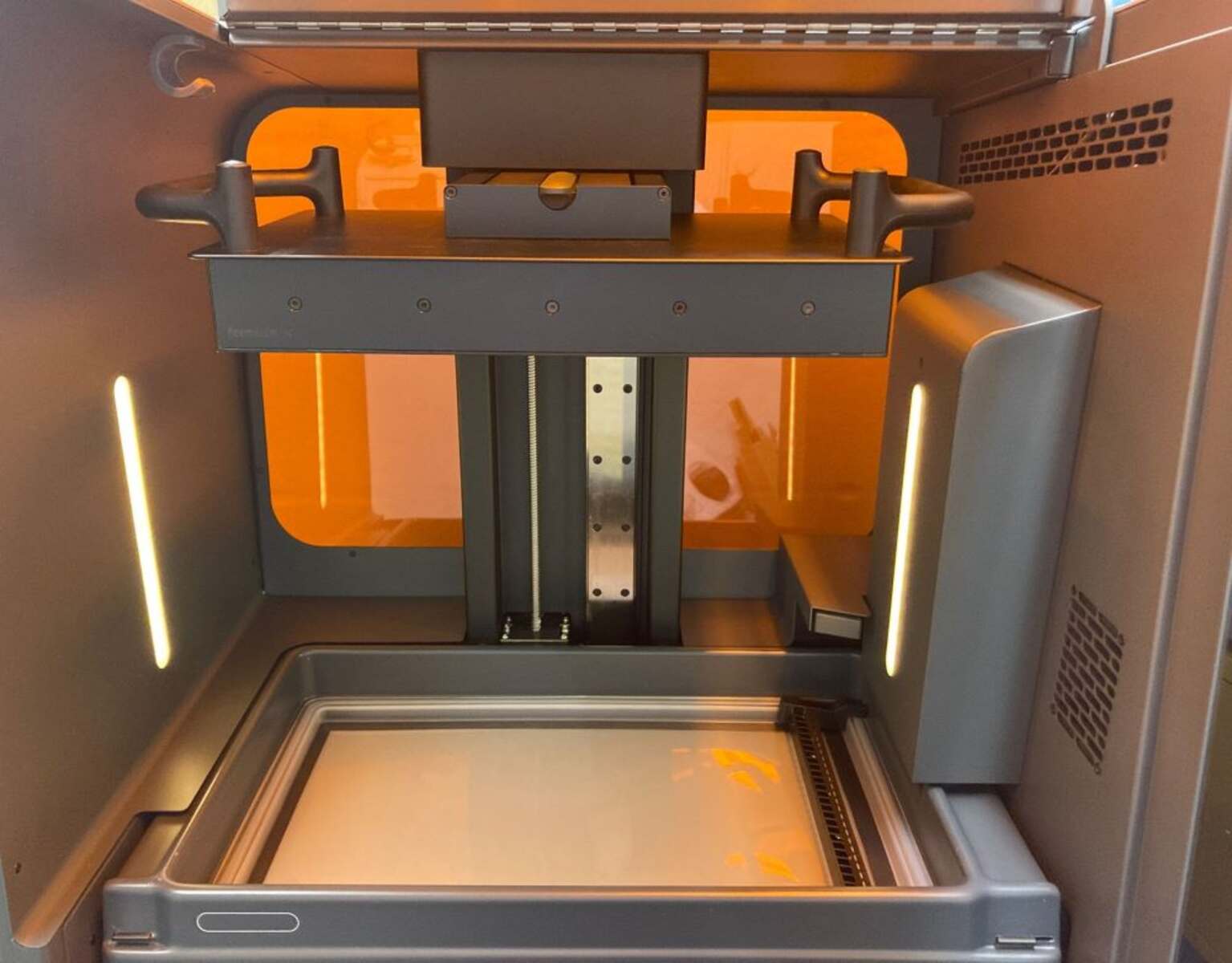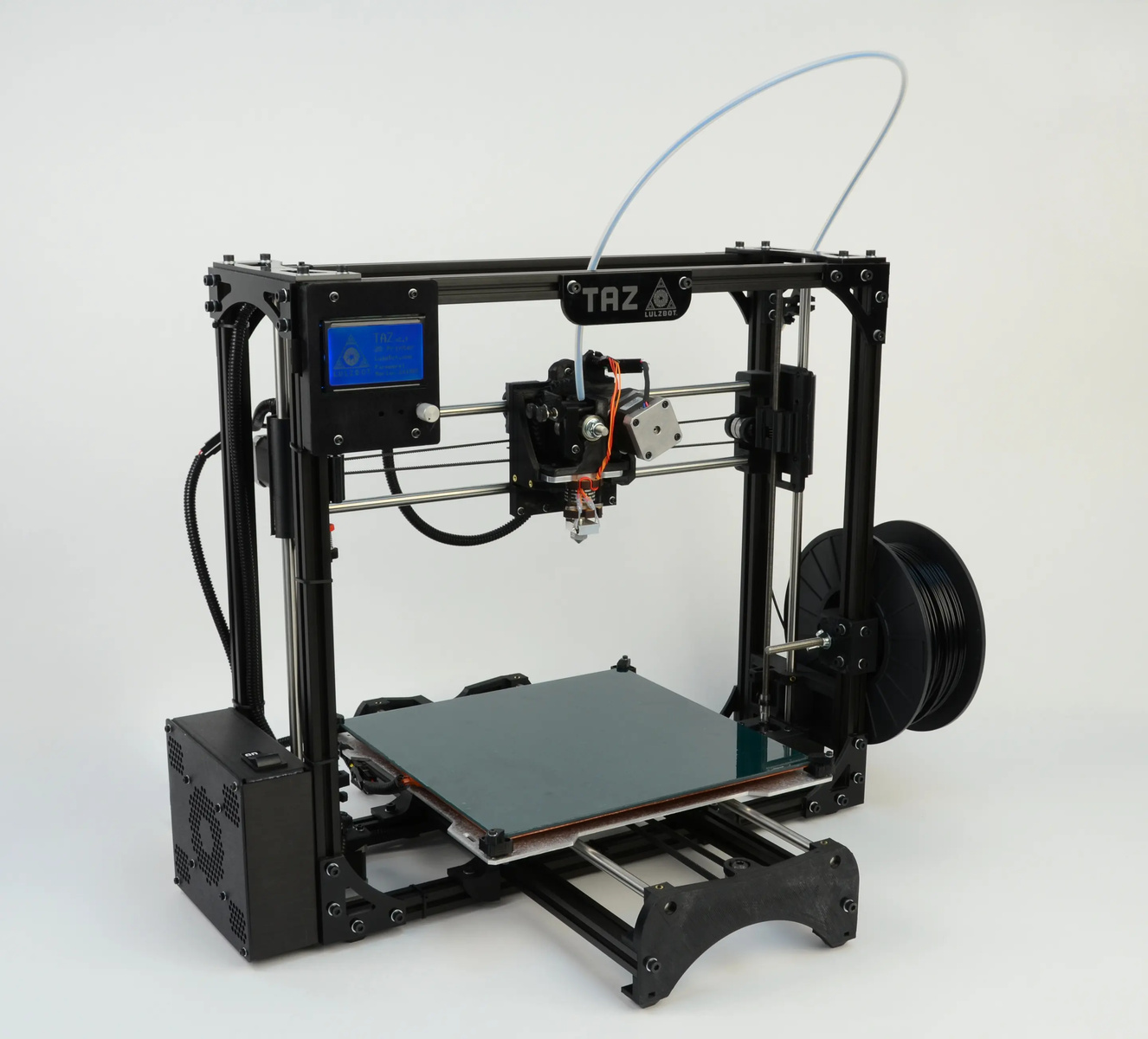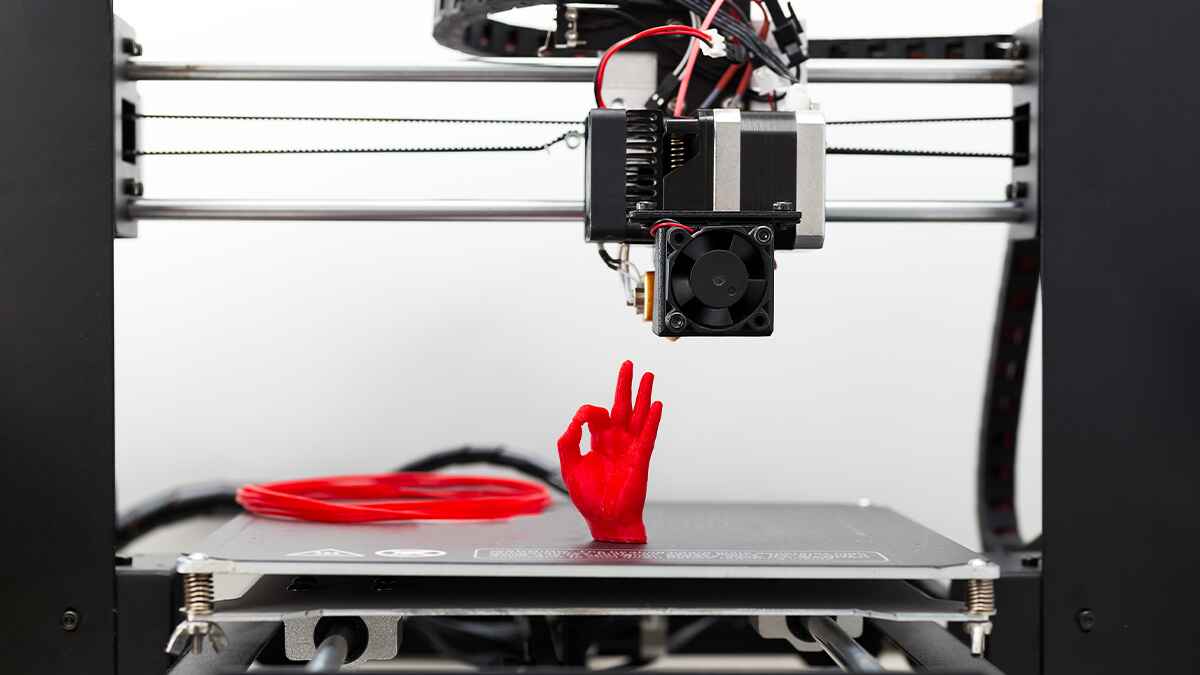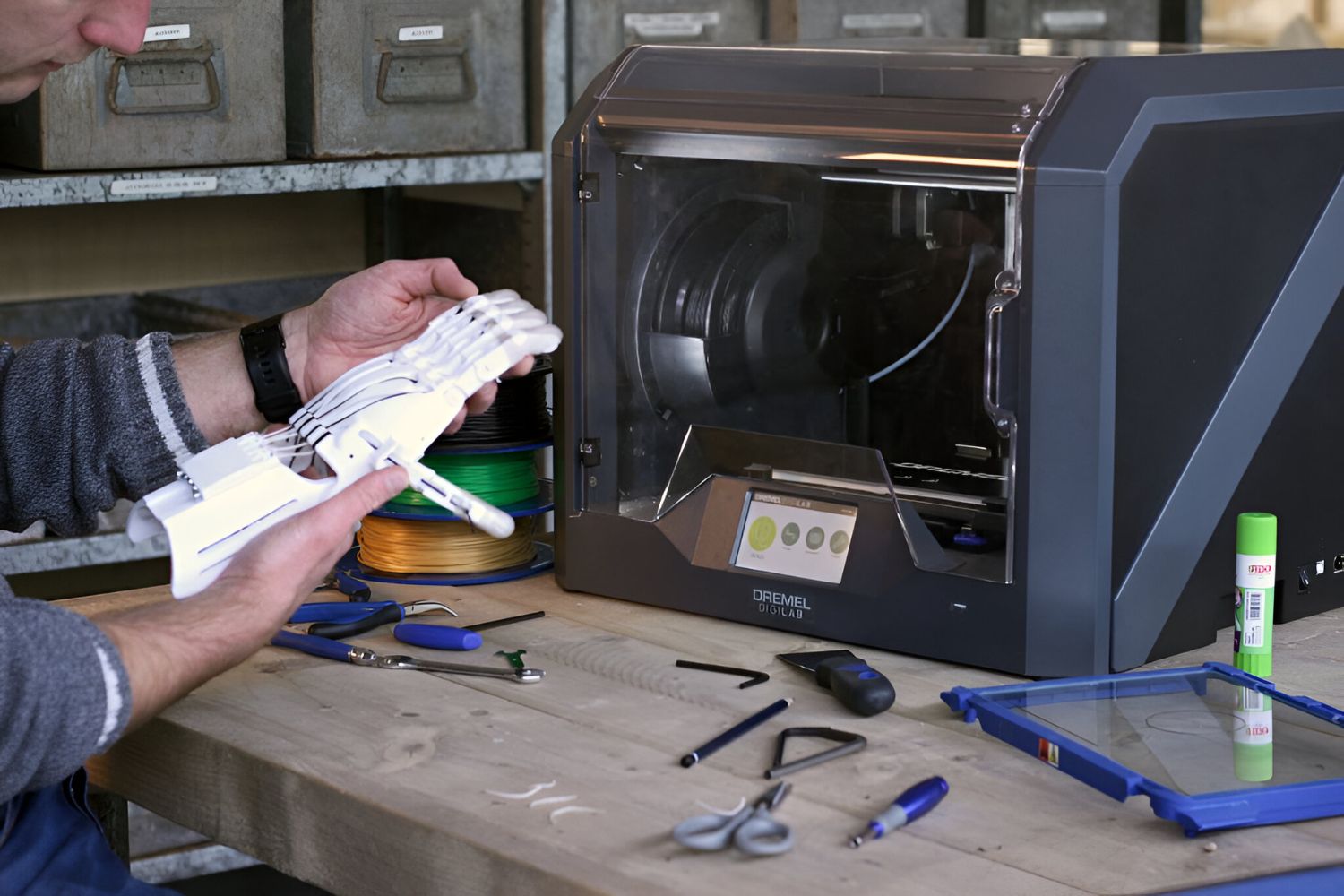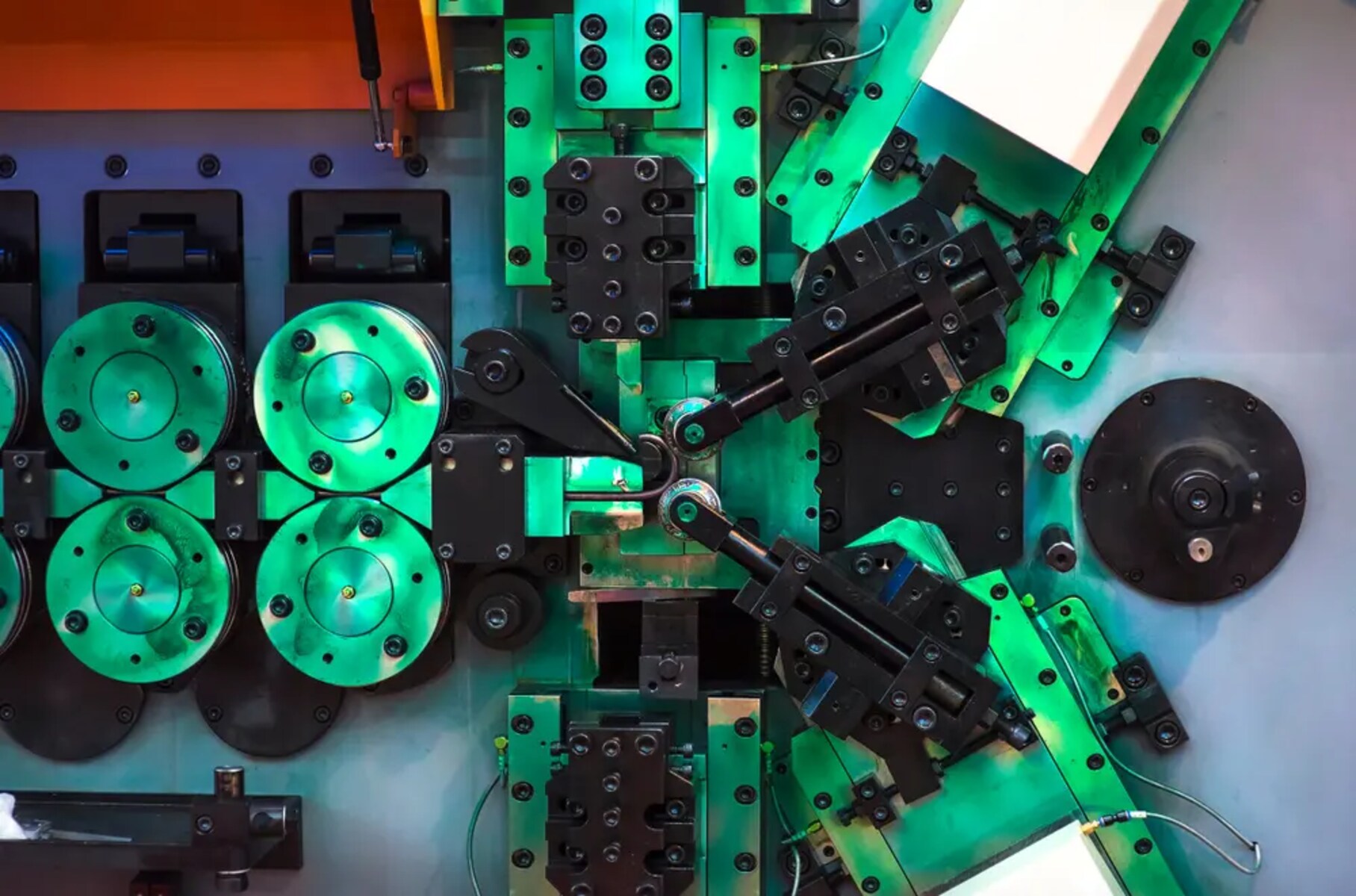Introduction
Welcome to the exciting world of 3D printing! If you’re considering getting into this revolutionary technology, one important question you may have is, “What kind of computer do I need for a 3D printer?” Choosing the right computer is crucial for a smooth and efficient 3D printing experience.
In this article, we will explore the key factors to consider when selecting a computer for your 3D printer. From processor requirements to graphics card recommendations, we’ll cover all the essentials to ensure your computer is up to the task.
3D printing is a rapidly growing industry with limitless possibilities. Whether you’re a hobbyist or a professional, having the right computer will significantly impact your printing process. A powerful computer will not only enable you to design and edit intricate 3D models but also allow for smooth and fast slicing and printing. On the other hand, an underpowered computer may struggle to handle the resource-intensive tasks involved in 3D printing, resulting in slow performance and frustrating delays.
Before diving into the technical specifications, let’s have a brief understanding of how 3D printing works. 3D printing, also known as additive manufacturing, is a process of creating three-dimensional objects by building layers upon layers of material. It starts with a digital 3D model that is sliced into sequential layers by slicing software. The 3D printer then reads these sliced layers and deposits the corresponding material to build the final object.
Now that we have a basic understanding of 3D printing, let’s move on to the essential factors to consider when choosing a computer for your 3D printer. From processor power to storage options, we will guide you through the necessary requirements to ensure a seamless printing experience.
Understanding the Basics of 3D Printing
3D printing, also known as additive manufacturing, is a ground-breaking technology that allows for the creation of three-dimensional objects from a digital model. Unlike traditional manufacturing methods that involve subtracting material from a block or mold, 3D printing builds objects by adding successive layers of material on top of each other.
The process starts with a digital file, typically in the form of a Computer-Aided Design (CAD) model. This digital model is then sliced into thousands of thin cross-sectional layers using specialized software. Each layer is essentially a two-dimensional blueprint that guides the 3D printer on where to deposit or solidify the material.
Once the slicing process is complete, the 3D printer can begin printing the physical object. The printer uses different technologies and materials depending on the printer type and the desired outcome. Common 3D printing technologies include Fused Deposition Modeling (FDM), Stereolithography (SLA), and Selective Laser Sintering (SLS).
FDM, the most widely used 3D printing technique, works by melting a plastic filament and extruding it layer by layer to create the object. SLA, on the other hand, uses a liquid resin that is selectively cured by a laser to solidify each layer. SLS involves using a laser to sinter powdered material, such as plastic or metal, layer by layer to create the final product.
One of the key advantages of 3D printing is its ability to produce complex geometries and intricate designs that are difficult or impossible to achieve through traditional manufacturing techniques. This makes it a valuable tool in various industries, including aerospace, automotive, healthcare, and even fashion.
Whether you’re a hobbyist exploring creative possibilities or a professional seeking to optimize product development processes, understanding the basics of 3D printing is crucial. It helps you grasp the underlying principles and make informed decisions when it comes to selecting the right 3D printer, materials, and software.
In the next sections of this article, we’ll delve into the important factors to consider when choosing a computer for your 3D printer. From the processor capabilities to the graphics card requirements, we’ll explore how these components play a significant role in achieving optimal 3D printing performance.
Key Factors to Consider
When it comes to choosing a computer for your 3D printer, there are several important factors to consider. These factors will ensure that your computer can handle the demanding tasks involved in 3D printing and provide a smooth and efficient user experience.
One of the primary considerations is the processor or CPU (Central Processing Unit). The CPU is responsible for executing the instructions and calculations necessary for running the 3D modeling and slicing software. A powerful CPU will ensure faster processing and smoother performance. Look for a processor with multiple cores and a high clock speed to handle the resource-intensive tasks of 3D printing effectively.
In addition to the processor, the amount of RAM (Random Access Memory) in your computer is crucial for a seamless 3D printing experience. RAM is responsible for storing and accessing the data required for running applications. For optimal performance, aim for at least 8GB of RAM, though more is better if your budget allows. This will ensure that your computer can handle large 3D models and complex slicing operations without slowing down.
Graphics card or GPU (Graphics Processing Unit) is another vital component to consider. While many 3D modeling and slicing software are CPU-intensive, some tasks can benefit from GPU acceleration. A dedicated graphics card with ample VRAM (Video RAM) can significantly improve the performance of rendering and visualizing your 3D models. Look for graphics cards from reputable manufacturers that are specifically designed for 3D modeling and rendering.
Storage options are also essential when it comes to choosing a computer for 3D printing. Solid-state drives (SSD) are recommended over traditional hard drives (HDD) due to their faster read and write speeds. This will enhance the overall speed and responsiveness of your computer, allowing for quicker file transfers and slicing processes. Consider investing in an SSD with enough storage capacity to accommodate your 3D models, software, and other files.
The operating system compatibility is also an important factor to consider. While most 3D modeling and slicing software are compatible with Windows, there are alternatives available for macOS and Linux users. Ensure that your computer’s operating system is supported by the software you plan to use.
Connectivity and available ports should also be taken into account. Your computer should have USB ports to connect your 3D printer and other peripherals. Additionally, having an Ethernet or Wi-Fi connection will enable you to transfer 3D models to your printer and download software updates easily.
Lastly, consider factors such as budget and future scalability. Determine your budget and choose a computer that suits your needs without breaking the bank. Additionally, think about your future needs and the possibility of upgrading components such as RAM and storage if necessary.
By considering these key factors, you can ensure that your computer is equipped to handle the demands of 3D printing, providing you with a seamless and efficient experience throughout your 3D printing journey.
Processor Requirements
The processor, also known as the CPU (Central Processing Unit), is a critical component to consider when choosing a computer for your 3D printer. It plays a significant role in the overall performance and speed of your 3D modeling and printing tasks. To ensure smooth operation and efficient processing, certain processor requirements should be met.
When it comes to 3D printing, a powerful processor is essential. Look for a processor with multiple cores, preferably quad-core or higher. A multi-core processor allows for better multitasking, enabling you to run resource-intensive 3D modeling software while simultaneously performing other tasks without experiencing performance issues.
In addition to the number of cores, clock speed is another crucial factor to consider. A higher clock speed allows for faster calculations and processing, resulting in quicker rendering and slicing times. Aim for a processor with a base clock speed of at least 3.0 GHz or higher. However, keep in mind that clock speed alone is not the sole determinant of performance and that other factors, such as cache size and architecture, also contribute to overall processing capabilities.
One consideration specific to 3D printing is compatibility with the software you plan to use. Some 3D modeling and slicing software may require specific processor features or versions. Ensure that the processor you choose meets the software’s system requirements.
Another aspect to consider is future scalability. While investing in a powerful processor is important for an optimal 3D printing experience, it’s also worthwhile to consider the future. Technology advances rapidly, and 3D modeling software may become more resource-intensive over time. Choosing a processor that allows for future upgrades, such as socket compatibility, will ensure you can keep up with evolving software requirements without having to replace the entire computer.
Ultimately, the processor is the brain of your computer, and having a powerful one will contribute to smooth operation and efficient 3D printing. By selecting a processor with multiple cores, a high clock speed, and considering future scalability, you can ensure that your computer is up to the task of handling demanding 3D modeling and printing tasks.
RAM Specifications
When it comes to 3D printing, having an adequate amount of RAM (Random Access Memory) in your computer is crucial for smooth and efficient performance. RAM plays a vital role in storing and accessing data that is necessary for running applications, including 3D modeling and slicing software. Here are some important RAM specifications to consider when choosing a computer for your 3D printer.
Firstly, it’s recommended to have a minimum of 8GB of RAM for a seamless 3D printing experience. This amount of RAM allows for the smooth running of most 3D modeling and slicing software. However, if you work with large 3D models or engage in complex slicing operations, more RAM will provide better performance. In such cases, upgrading to 16GB or even 32GB of RAM can significantly enhance your workflow by allowing for faster data retrieval and processing.
Another consideration is the RAM type and speed. DDR4 (Double Data Rate 4) is the current standard for RAM, offering faster data transfer rates compared to its predecessors. Look for a computer with DDR4 RAM modules to ensure optimal performance. Additionally, consider the speed of the RAM, indicated by the frequency in megahertz (MHz). Higher RAM speeds can further enhance data access and processing. Aim for RAM with a frequency of at least 2400MHz or higher for 3D printing purposes.
One important aspect to note is that the RAM specifications should be compatible with your computer’s motherboard. Check the specifications and supported RAM configurations of your motherboard to ensure compatibility before making a purchase. Ultimately, the compatibility of the RAM with the motherboard will determine if it can be utilized to its full potential.
Furthermore, consider the expandability of the RAM. As your 3D printing needs may evolve and software requirements may increase over time, it’s beneficial to choose a computer with room for RAM expansion. This way, you have the option to upgrade and add more RAM modules in the future if necessary.
In summary, having sufficient RAM is crucial for a smooth and efficient 3D printing experience. Aim for a minimum of 8GB of DDR4 RAM, understanding that more RAM will enhance performance, especially when working with larger models or complex slicing operations. Also, consider the RAM speed, compatibility with the motherboard, and future expandability to ensure a well-equipped computer for your 3D printing endeavors.
Graphics Card Recommendations
When it comes to 3D printing, having a capable graphics card, also known as a GPU (Graphics Processing Unit), is essential for optimal performance and visual quality. While the processor handles most of the calculations and computations, the graphics card plays a significant role in rendering and visualizing your 3D models. Here are some key recommendations to consider when choosing a graphics card for your 3D printing endeavors.
Firstly, investing in a dedicated graphics card is highly recommended for 3D printing. While integrated graphics found in most CPUs can handle basic tasks, they may struggle with the more demanding requirements of 3D modeling and rendering. Dedicated graphics cards have their own dedicated memory, known as VRAM (Video RAM), which allows for faster data access and rendering. Look for a graphics card with at least 4GB of VRAM to ensure smooth performance when working with complex 3D models.
When it comes to graphics card options, both NVIDIA and AMD offer a range of suitable options for 3D printing. NVIDIA’s GeForce series, particularly the GTX and RTX series, are well-known for their performance in 3D modeling and rendering applications. AMD’s Radeon series, such as the RX series, also provide excellent performance and value for 3D printing tasks.
Consider the specific requirements of the 3D modeling and slicing software you plan to use. Some software may have specific compatibility or performance advantages with certain graphics cards. Check the software’s documentation or website for any recommended or supported graphics cards.
In terms of graphics card specifications, the number of CUDA cores (for NVIDIA) or stream processors (for AMD) is a key consideration. More cores or stream processors generally result in better performance, especially when dealing with complex 3D scenes or rendering tasks. Additionally, aim for a graphics card with a higher clock speed as this will help in faster rendering and visualization.
Keep in mind that having a powerful graphics card is not solely dependent on the amount of VRAM or the number of cores. It is also influenced by factors such as the efficiency of the GPU architecture and driver support. Look for graphics cards that are specifically designed for 3D modeling and rendering applications.
Finally, consider the cooling and power requirements of the graphics card. Some high-end graphics cards may require additional cooling solutions or higher wattage power supplies. Ensure that your computer’s cooling system and power supply are capable of handling the demands of the graphics card you choose.
By selecting a dedicated graphics card that meets the aforementioned recommendations, you can ensure smooth rendering, visualization, and overall performance for your 3D printing projects.
Storage Options
When it comes to choosing a computer for your 3D printer, storage options are an important consideration that can significantly impact your overall experience. Having the right storage solution not only ensures you have enough space to store your 3D models and software but also contributes to faster file transfers and smoother operation. Here are some key factors to consider when evaluating storage options for your 3D printing needs.
Firstly, it’s recommended to opt for a solid-state drive (SSD) rather than a traditional hard disk drive (HDD). SSDs offer faster read and write speeds, resulting in quicker file access and transfer times. This means that your computer will be more responsive when loading or saving 3D models or when performing slicing operations.
When it comes to SSD storage capacity, it’s essential to select a size that can accommodate your growing collection of 3D models and necessary software. Consider the size of your typical 3D models, the software you use, and any other files or projects you might need to store on your computer. SSDs range in capacity from 128GB to several terabytes (TB). Aim for a capacity that suits your needs while leaving some room for future expansion.
In addition, the form factor of the SSD is another important consideration. Most modern laptops and desktops use the M.2 form factor. These SSDs are small, compact, and connect directly to the motherboard, eliminating the need for cables. However, if you’re using an older computer or a custom build, make sure to check the available storage interfaces, such as SATA or PCIe, to select a compatible SSD.
While SSDs are preferred due to their speed and reliability, you can also consider using HDDs for additional storage. HDDs offer larger storage capacities at a more affordable price, making them suitable for storing bulk files or backups. However, keep in mind that HDDs are slower compared to SSDs, so it’s better to use them for non-time-sensitive data storage needs.
If you decide to use both SSD and HDD storage, consider using the SSD for your operating system, frequently accessed files, and software. Use the HDD for storing larger files, archives, or backups.
Lastly, ensure that your chosen storage options are compatible with your computer. Check the specifications and available connectors on your motherboard to ensure that the storage options you select can be connected and utilized effectively.
By selecting the right storage options, such as SSDs for speed and efficient file handling, and considering your storage needs and compatibility, you can ensure a smooth and reliable experience when working with your 3D printer and projects.
Operating System Compatibility
When choosing a computer for your 3D printer, one important factor to consider is the compatibility of the operating system (OS) with the software and tools you plan to use. While certain 3D modeling and slicing software are compatible across multiple operating systems, it’s crucial to ensure that your chosen OS supports the specific software you require. Here are some key considerations regarding operating system compatibility for 3D printing.
Windows remains the most widely used operating system for 3D printing. It offers broad software support and compatibility, making it a popular choice among 3D printing enthusiasts and professionals. Most 3D modeling and slicing software, as well as printer drivers, are developed with Windows compatibility in mind. When considering a Windows-based computer, it’s important to choose a version that is supported by the software you plan to use.
macOS, the operating system used on Apple Mac computers, is also a viable option for 3D printing. While macOS may have a smaller selection of software compared to Windows, it is still compatible with many popular 3D modeling and slicing applications. Check the software manufacturer’s website or documentation to verify macOS compatibility before making your decision.
Linux is known for its customization and open-source nature, making it a popular choice for certain 3D printing enthusiasts and professionals. Linux offers a wide range of 3D modeling and slicing software options, including community-developed tools. However, it’s important to note that Linux may require more technical knowledge to set up and configure compared to Windows or macOS. Ensure that your chosen Linux distribution is supported by the software you intend to use.
Before making a final decision on the operating system, it’s crucial to research and verify the compatibility of your chosen software, printer drivers, and any other necessary tools with your preferred OS. Check the official websites, user forums, or software documentation for specific compatibility information.
Remember that while compatibility is a crucial factor, it’s equally important to choose an operating system that you are comfortable with using. Consider your familiarity with the OS, user interface preferences, and any specific workflow requirements you may have. Selecting an operating system that you are comfortable with will contribute to a more efficient and enjoyable 3D printing experience.
In summary, consider the operating system compatibility with the 3D modeling and slicing software you plan to use. Windows offers broad software support, while macOS provides a user-friendly environment for Apple Mac users. Linux provides customization options but may require more technical knowledge. Verify the compatibility of your chosen software and tools with your preferred OS to ensure seamless operation with your 3D printer.
Connectivity and Ports
When setting up your computer for 3D printing, it’s important to consider the connectivity options and available ports. The right connectivity and ports ensure seamless communication with your 3D printer, as well as easy transfer of 3D models and firmware updates. Here are some key considerations when it comes to connectivity and ports for your 3D printing needs.
One of the most important connections is USB (Universal Serial Bus). USB is commonly used for connecting 3D printers to computers. Ensure that your computer has USB ports that are compatible with the USB version of your 3D printer. Most printers use USB 2.0 or higher, so having USB 3.0 or USB 3.1 ports on your computer ensures faster data transfer and enables more efficient communication with your printer.
In addition to USB ports, an Ethernet connection or Wi-Fi capability can be advantageous for your 3D printing setup. An Ethernet connection allows for a stable and reliable connection between your computer and the printer, especially in cases where multiple devices or a dedicated network is involved. Wi-Fi connectivity, on the other hand, provides the convenience of wireless connectivity, allowing you to transfer files to your printer without the need for physical cables. Having both Ethernet and Wi-Fi options can offer flexibility and convenience depending on your specific setup and preferences.
Another connectivity consideration is the availability of an SD card slot or a microSD card slot on your computer. Some 3D printers allow you to print directly from an SD card, which can be beneficial for standalone printing without the need for continuous computer connection. Having an SD card slot or a microSD card slot on your computer allows for easy transfer of sliced models to the print-ready files on the card.
When it comes to additional ports, consider any peripherals or devices you may need to connect to your computer. For example, if you plan on using a separate monitor for your 3D modeling or need to connect other devices such as external hard drives or cameras, ensure that your computer has the necessary ports, such as HDMI, DisplayPort, or Thunderbolt, to accommodate these connections.
It’s also important to consider the availability of power outlets in your computer setup. Some 3D printers require a separate power source or have their own power supply, so ensure that you have sufficient power outlets near your computer to accommodate both the printer and any other necessary devices.
By evaluating your connectivity needs and ensuring that your computer has the required ports and connectivity options, you can establish a smooth and efficient connection with your 3D printer. This will enable seamless file transfers, firmware updates, and overall ease of use throughout your 3D printing journey.
Other Considerations
When choosing a computer for your 3D printer, there are a few other important considerations to keep in mind. These factors can further enhance your 3D printing experience and ensure that your computer is well-equipped for the tasks at hand. Here are some additional considerations to be aware of:
Firstly, budget is an essential factor when purchasing a computer. Determine your budget before starting your search and look for options that meet your requirements while staying within your allocated budget. Keep in mind that a higher budget can allow for more powerful components, but it’s important to strike a balance between performance and affordability.
Future scalability is another crucial consideration. As technology advances and your 3D printing needs evolve, you may find the need to upgrade your computer’s components. Look for a computer that allows for easy component upgrades, such as adding more RAM or upgrading the graphics card. This will help future-proof your machine and save you from having to invest in an entirely new computer down the line.
Silence and cooling are important factors to consider, especially if you plan on running your 3D printer and computer in the same workspace. Look for computers that have efficient cooling systems to prevent overheating during long printing sessions. Additionally, consider noise levels, as some computers may produce louder fan noises that can be distracting in a quiet environment.
Portability may be a consideration if you plan on taking your computer to different locations or if you have limited desk space. Laptops or compact desktops can provide the flexibility and convenience of working on your 3D designs from various locations.
Warranty and customer support are important factors to consider, especially when investing in a new computer. Look for brands that provide reliable warranties, good customer support, and positive reviews. This will ensure that you have the necessary support in case any issues arise with your computer.
Lastly, ergonomic considerations should not be overlooked. Ensure that your computer setup is comfortable and promotes good posture during long hours of designing and printing. Use an ergonomic keyboard and mouse, position your monitor at eye level, and invest in an adjustable chair to prioritize your physical well-being.
By considering these additional factors, you can make a well-informed decision when choosing a computer for your 3D printer. Taking into account your budget, future scalability, cooling and noise levels, portability, warranty and customer support, as well as ergonomic considerations, will contribute to a better overall 3D printing experience.
Conclusion
Choosing the right computer for your 3D printer is a crucial decision that can significantly impact your overall 3D printing experience. By considering key factors such as processor capabilities, RAM specifications, graphics card recommendations, storage options, operating system compatibility, connectivity and ports, and other important considerations, you can ensure that your computer is well-equipped to handle the demands of 3D modeling, slicing, and printing.
A powerful processor with multiple cores and a high clock speed ensures smooth and efficient performance during complex 3D modeling tasks. Sufficient RAM capacity and speed allow for quick data access and processing, especially when dealing with large models or complex slicing operations. A capable graphics card with ample VRAM enhances rendering and visualization, bringing your 3D designs to life with impressive detail. Opting for solid-state drives (SSD) instead of hard disk drives (HDD) provides faster file access and transfer times, improving overall workflow efficiency.
Considering operating system compatibility is essential, ensuring that your chosen OS supports the software and tools you plan to use for 3D printing. Evaluating connectivity options and available ports, such as USB, Ethernet, Wi-Fi, and SD card slots, enables seamless communication with your 3D printer and efficient file transfer. Other factors, such as budget, future scalability, cooling and noise levels, portability, warranty and customer support, as well as ergonomic considerations, contribute to a well-rounded computer setup for your 3D printing needs.
By carefully considering these factors and finding the right balance between performance, affordability, and compatibility, you can select a computer that meets your specific requirements and ensures a satisfying 3D printing experience. Whether you’re a hobbyist exploring creative possibilities or a professional optimizing your product development process, having the right computer will enhance your productivity and bring your 3D printing projects to life with precision and efficiency.







